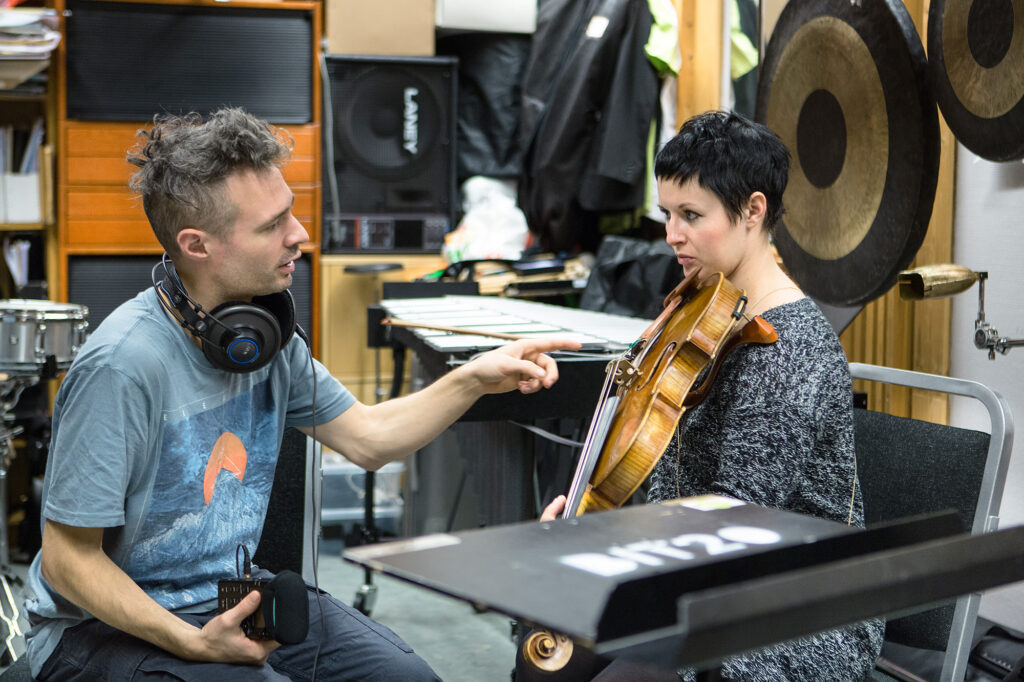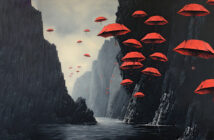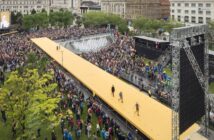Tiny microsounds in massive swarm formations, a social media dystopia. The Bow Corpse is a commissioned concert work for contemporary orchestra BIT20, premiering at the Nattjazz festival, June 1st 2015.
The Bow Corpse takes place in a future where social media has destroyed individuality. It deals with privacy, big data, tracking and the end of obscurity. Each instrument in the orchestra is digitally enhanced with their own swarm of digital clones. The live performance on June 1st features twelve human performers, 4096 realtime digital ghost clones, using custom developed realtime swarm flocking software. 8 musicians of BIT20, Thomas T. Dahl on guitar, co-composer Craig Farr on drums, and Nuria Guiu Sagarra on choreography and movement.
This coming Friday Jan 16th there will be a public beta, a work-in-progress showcase at BEK. I’ll explain, discuss and perform our custom software, reveal parts of the music, perform parts of the piece, observe reactions, note feedback.
- Friday Jan 16th, 12:00 CET
- BEK (Bergen Center For Electronic Arts), Bergen, Norway
- C. Sundtsgate 55, 9th floor (top floor)
- Expected runtime including feedback, 45 min
Background
In our digital lives we are generating endless amounts of data. We happily ignore it, sprinkling our lives with a delicious, digital trail of trash. Big data uses this trash to uncover patterns and meanings on both an individual and societal level. This can benefit us, and it can hurt us. Which data is evil, which is good?
The Bow Corpse uses these same mechanisms, but musically in realtime on a stage. Thousands of unwanted, disregarded microscopic sounds, orchestral sonic trash, is multiplied into cloud societies, huge swarms. Each sound by itself is dumb, but the hive is intelligent. The cloud reveals textures, patterns, melodies, rhythms. There is beautiful music, there is noise. Which is good, which is evil?
Each musician on stage is followed by their own realtime swarm of digital clones. These clones are built from the microscopic, everyday sounds from each instrument, the sonic trash usually ignored and avoided in an acoustic instrument. Fingers touching wood. Hands gripping handles. The hairs of a bow upon contact with the string. Lips embracing metal. The gesture of a stick, displacing air through movement. Fabric stretching in a gesture. Valves opening and closing.
These sounds usually disappear in a performance. But when captured, organized and then multiplied to thousands of thousands of copies, these tiny, forgettable fragments appear as massive clouds, systems, patterns.
The Bow Corpse uses custom software, developed specifically for the performance by Joao Fonseca, to trigger, run and then filter these swarms and their clones. The clones are built from extensive recording sessions with each musician and their instrument.
Previously, we did public betas with individual ghosts and a single swarm, prototyping the ghost behaviour and the choreography. Through the last year I have been researching and recording microscopic sounds from each performer in the orchestra. This week I will be working at BEK, setting up the software to run ghosts on multiple computers simultaneously, creating the orchestra setup and trying out the swarms in an orchestra setup for the first time.
On Friday, January 16th, there will be a public talk and demo. First a short intro explaining the background, concept, method and sources, and a demonstration how the swarm app works in this context, and then a 10-15 minute impro beta performance, using segments of the score, the app, the sounds and trying out the technology in front of a clever crowd.
The event is open for all.
- The Bow Corpse (Work-In-Progress, Public Beta)
- Friday Jan 16th, 12:00
- BEK (Bergen Center For Electronic Arts), Bergen, Norway
- C. Sundtsgate 55, 9th floor (top floor)
- Expected runtime including feedback, 45 min
Grahpic credits: Cecilie Bannow (top), Joao Fonseca (app), Jarle H. Moe (recording sessions).







